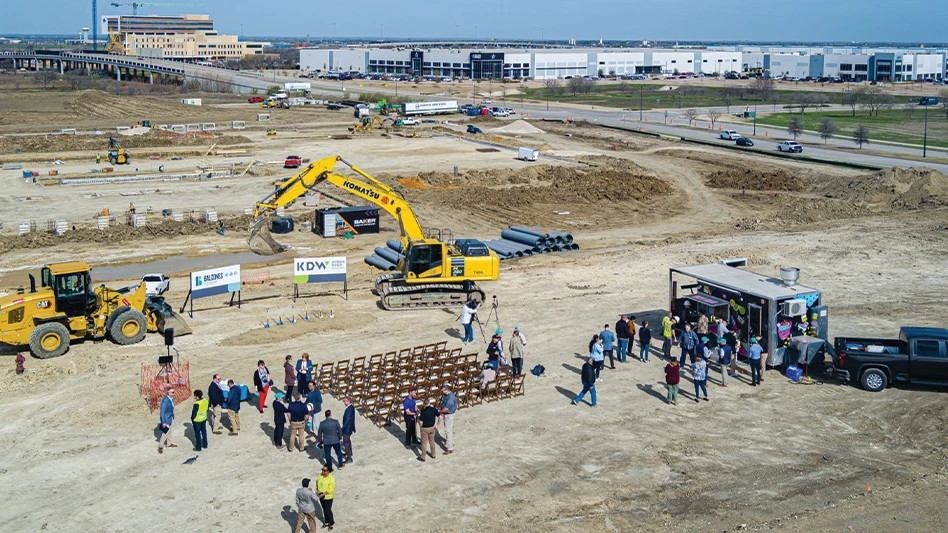The prices domestic mills and overseas buyers are willing to pay for shredded recycled steel are poised to remain in a kind of purgatory heading into the summer.
As measured by the Raw Material Data Aggregation Service (RMDAS) of Pittsburgh-based MSA Inc., the value of shredded scrap has hovered in a narrow range from June 2023 through May of this year, except for a three-month uptick this past winter.
Reports from Davis Index and others for the June buying period express little optimism of an uptick occurring in that time frame.
The RMDAS national mill buying average price for No. 2 shredded scrap from June 2023 through May 2024 sat between $395 and $410 per ton in nine of those 12 months. In the one uptick, which lasted from December 2023 until February of this year, the price peaked at $469.
“With the election looming, it appears that is also affecting business decisions as we wait to see where policies will take us.” – a Great Lakes region scrap processor
Scrap processors and shippers went through the first five domestic mill buying periods of this year without seeing their inventory gain value or their scale prices rise and, as of press time, it seemed possible the streak would make it to six.
Those who would benefit from a change of status say the prolonged static price has had plenty of drawbacks, but the duration could start to dull some of those ill effects.
While a price downturn can cause some small ferrous scrap dealers and generators, such as auto dismantlers, to hold onto material, many are not able to wait out a six-month trough.
“I do not have any indication of anyone holding scrap [heading into] June,” a ferrous scrap buyer in the Great Lakes region tells Recycling Today.
Another buyer, whose company procures scrap in a wider portion of the Midwest, indicates suppressed scale prices could be a factor in inflows that he characterizes as “just OK.”
Scale flows and commercial routes in this buyer’s part of the country have not been overloaded with material this spring. “Daily average flows in May were similar to April across our regions, but the price drops since the first quarter have slowed things down considerably from February and March levels,” he says.

The second processor does not think large volumes of material are being withheld from the market, citing the need for business owners and managers throughout the scrap supply chain to maintain an income stream.
“Smaller dealers typically need cash flow, and we are not seeing inventories of scrap piling up anywhere in our regions,” he says. “[However,] there are some auto dismantler car body suppliers who are slowing up shipments due to lower pricing.”
One bright spot for shredder operators and some other buyers is the hot nonferrous metals market, with copper prices in particular prompting the peddler sector to prioritize scrap collection and sales in the first half of this year.
“With nonferrous pricing strong, it’s probably helping some of the ferrous flow continue that may otherwise be sat on due to lower prices,” the multilocation recycling manager says.
The other recycler, however, feels less than optimistic about the ferrous scrap market’s prospects heading into the second half of this year.
“Mill demand for June will be tepid at best,” he says. “With high interest rates, the [steel] service centers have moved to a just-in-time strategy, buying coils and not stocking the tons they used to.”
The recycler also cites concerns including a lack of payoff in high-profile electric vehicle production plants and uncertainty around a contentious presidential election.

“With the election looming, it appears that is also affecting business decisions as we wait to see where policies will take us,” he says.
Domestic steel demand has largely maintained the status quo in 2024.
Year to date after five months, steelmakers in the U.S. produced 2.6 percent less steel compared with the period from January through May 2023, amounting to nearly 1 million tons less steel made in melt shops, according to the Washington-based American Iron and Steel Institute (AISI).
In the last week of May, about 1.74 million tons of steel were made in the U.S., a 0.5 percent increase from the prior week, but down by 0.5 percent from the comparable week in 2023.
The nation’s mills operated at a capability utilization (capacity) rate of 78.5 percent in the last week of May, AISI reports, averaging a 76.6 percent rate in the first five months of the year.
Unfortunately for mill operators and scrap suppliers alike, that 76.6 percent figure is down 1.3 percent from the same time frame last year, when mills maintained a 77.9 percent capacity rate.
Get curated news on YOUR industry.
Enter your email to receive our newsletters.

Explore the July 2024 Issue
Check out more from this issue and find your next story to read.
Latest from Recycling Today
- Recycled steel price crosses $500 per ton threshold
- Smithers report looks at PCR plastic’s near-term prospects
- Plastics association quantifies US-EU trade dispute impacts
- Nucor expects slimmer profits in early 2025
- CP Group announces new senior vice president
- APR publishes Design Guide in French
- AmSty recorded first sales of PolyRenew Styrene in 2024
- PRE says EU’s plastic recycling industry at a breaking point





